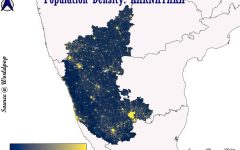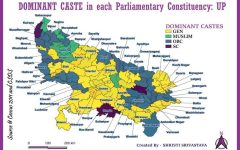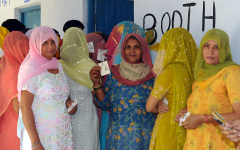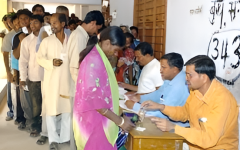Welcome Democracy! Really?
October 17, 2024 2024-10-18 7:04Welcome Democracy! Really?

Welcome Democracy! Really?
Author: Deepti Gulati.
The vote counting for the 90 constituencies in Jammu and Kashmir wrapped up on 8th October,2024 Tuesday, revealing The National Conference-Congress coalition has won 49 seats. This outcome marks a significant milestone, as it leads to the formation of an elected government after a six-year hiatus following the collapse of the PDP- BJP alliance on June 20, 2018, and the subsequent abrogation of Article 370. The majority threshold stands at 46 seats. These elections, the first in Jammu and Kashmir since 2014, were conducted in three phases. The first phase took place on September 18, covering 24 seats, followed by the second phase on September 25 which included 26 seats. The final phase involving the remaining 40 seats, was held on October 1. The primary contenders in this eagerly awaited election included the Congress- National Conference alliance, the People’s Democratic Party (PDP), and the Bhartiya Janta Party (BJP). This electoral process also comes five years after the bifurcation of Jammu and Kashmir into two separate union territories: Jammu and Kashmir, and Ladakh.
The Indian Government framed the election as a step toward restoring normalcy and democracy in Jammu and Kashmir. For the center, the elections were a symbol of development and political stabilization, a sign that life in the region was returning to normal. However, the reality on the ground was more complex. For many in the valley, the elections unfolded against a backdrop of ongoing political disenfranchisement, the lingering presence of security forces, and an unsolved sense of loss following the revocation of the special status. While the rhetoric of “Development” dominated political narratives, it was not sufficient to address the deep-seated feelings of alienation and mistrust that persists in the region.
The elections carry the weight of a long history of political manipulation and disenfranchisement in Jammu and Kashmir. From the rigged elections of 1987, which triggered decades of unrest, the central governments recent reshaping of the region’s political landscape, the people of Jammu and Kashmir have witnessed the erosion of their political autonomy over the years. The once dominant regional parties, like the NC and the PDP, now find themselves navigating a drastically altered landscape, with their political influence diminished and their traditional base fractured. The rise of newer parties, perceived as being more accommodating to New Delhi’s agenda, further complicates the political dynamics.
Participation in these elections, especially in the valley, was often driven by pragmatism rather than enthusiasm. Many voters approached the process as a means of addressing immediate local concern, such as employment, healthcare, and infrastructure, rather than as an endorsement of the new political order. The turnout in some areas demonstrated a cautious engagement system, while other regions, where boycotts and low participation were more prevalent, signaled continuing discontent and a sense of alienation. For many Kashmiris the act of voting was a form of negotiation- a way of managing their immediate needs within a system they distrust, rather than a hopeful endorsement of a new future.
The election also reflects the post- Article 370 abrogation reality, where the central government’s writ largely governs the region. With the abrogation of the special status, the space for regional political autonomy has been significantly reduced. While the newly elected representatives may take office, the question remains whether they will have any real power to influence governance or policy decisions, or if they will simply function within a deeper framework tightly controlled by the center. The deeper unresolved question of Justice, Identity and Self-determination remains. The political process as framed by the center seeks to institutionalize stability, but for many Kashmiris, it feels like an extension of control rather than restoration of democracy.
The assembly elections in Jammu & Kashmir were therefore not just an exercise in democratic function. They were a complex reflection of the region’s contested political future, caught between the pull of Co-option and resistance, pragmatism, alienation, survival and the search for justice. While the results may shape the day-to-day governance of the region, the larger questions of autonomy, dignity and identity continue to loom over Jammu and Kashmir, unresolved and urgent. The elections have offered a glimpse into the delicate balancing act between the region’s desire for self- governance and the central government’s consolidation of power, Leaving the future of Jammu and Kashmir’s political landscape uncertain.






